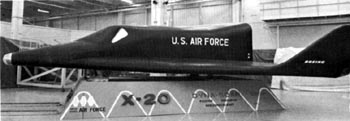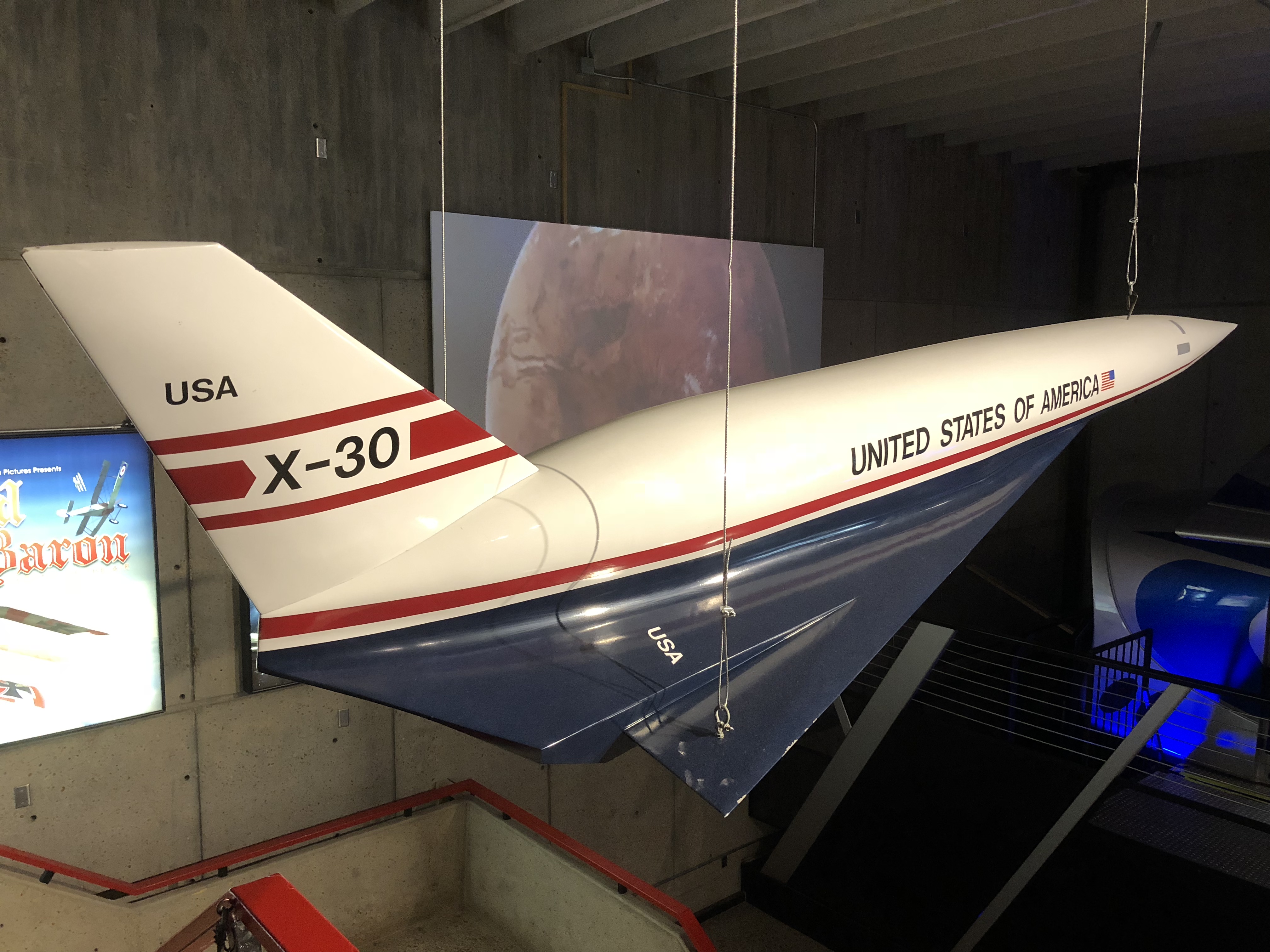|
Triamese
The Triamese was a 1965 design for an orbital launch system from General Dynamics. This vehicle was composed of three similar winged vehicles. The fuel of each vehicle was used in sequence to feed all of the motors via a manifold. After the vehicle was empty it separated from the remaining active vehicles and returned to earth for a Horizontal recovery. The final stage held the cargo. The overall concept was very similar to the 1964 BAC Mustard design and suffered the same fate. See also * Douglas Astro The Douglas Astro was a design concept for a fully reusable space launch system from the Douglas Aircraft Company The Douglas Aircraft Company was an American aerospace manufacturer based in Southern California. It was founded in 1921 by Donald ... * Boeing X-20 Dyna-Soar * Rockwell X-30 References Cancelled space launch vehicles Former proposed space launch system concepts Rocket-powered aircraft Spaceplanes {{{rocket-stub ... [...More Info...] [...Related Items...] OR: [Wikipedia] [Google] [Baidu] |
BAC Mustard
The Multi-Unit Space Transport And Recovery Device or MUSTARD, usually written as Mustard, was a reusable launch system concept that was explored by the British Aircraft Corporation (BAC) during the mid-1960s. Mustard was intended to operate as a multistage rocket, the individual stages comprising near-identical spaceplane modules. These planes, or stages, were hypersonic vehicles, capable of flying at speeds in excess of five times the speed of sound. Following a vertically standing launch, each stage was to progressively separate during the ascent, after which they would individually fly back towards a suitable landing strip. The final spaceplane was to be capable of attaining such an altitude that it would be able to achieve a sub-orbital trajectory before also performing a controlled return. Following a conventional landing, all of the stages were intended to be reused multiple times. It was projected that Mustard was suitable for launching payloads weighing as much as int ... [...More Info...] [...Related Items...] OR: [Wikipedia] [Google] [Baidu] |
Douglas Astro
The Douglas Astro was a design concept for a fully reusable space launch system from the Douglas Aircraft Company The Douglas Aircraft Company was an American aerospace manufacturer based in Southern California. It was founded in 1921 by Donald Wills Douglas Sr. and later merged with McDonnell Aircraft in 1967 to form McDonnell Douglas; it then operated as .... It combined two manned lifting bodies, with only one of them achieving orbit. The system was designed around much existing hardware from the Apollo and other US space programs. See also * BAC Mustard * Triamese References Former proposed space launch system concepts Two-stage-to-orbit Space launch vehicles of the United States {{rocket-stub ... [...More Info...] [...Related Items...] OR: [Wikipedia] [Google] [Baidu] |
General Dynamics
General Dynamics Corporation (GD) is an American publicly traded, aerospace and defense corporation headquartered in Reston, Virginia. As of 2020, it was the fifth-largest defense contractor in the world by arms sales, and 5th largest in the United States by total sales. The company is a Fortune 100 company, and was ranked No. 94 in 2022. Formed in 1954 with the merger of submarine manufacturer Electric Boat and aircraft manufacturer Canadair, the corporation today consists of ten subsidiary companies with operations in 45 countries. The company's products include Gulfstream business jets, Virginia- and Columbia-class nuclear-powered submarines, Arleigh Burke-class guided-missile destroyers, M1 Abrams tanks and Stryker armored fighting vehicles. In 2021, General Dynamics had worldwide sales of $38.85 billion and a workforce of approximately 103,000 full-time employees. The current chairman and chief executive officer (CEO) is Phebe Novakovic. History Electric Boat Ge ... [...More Info...] [...Related Items...] OR: [Wikipedia] [Google] [Baidu] |
Boeing X-20 Dyna-Soar
The Boeing X-20 Dyna-Soar ("Dynamic Soarer") was a United States Air Force (USAF) program to develop a spaceplane that could be used for a variety of military missions, including aerial reconnaissance, bombing, space rescue, satellite maintenance, and as a space interceptor to sabotage enemy satellites. The program ran from October 24, 1957, to December 10, 1963, cost US$660 million ($ in current dollars), and was cancelled just after spacecraft construction had begun. Other spacecraft under development at the time, such as Mercury or Vostok, were space capsules with ballistic re-entry profiles that ended in a landing under a parachute. Dyna-Soar was more like an aircraft. It could travel to distant targets at the speed of an intercontinental ballistic missile, was designed to glide to Earth like an aircraft under control of a pilot, and could land at an airfield. Dyna-Soar could also reach Earth orbit, like conventional, manned space capsules. These characteristics mad ... [...More Info...] [...Related Items...] OR: [Wikipedia] [Google] [Baidu] |
Rockwell X-30
The Rockwell X-30 was an advanced technology demonstrator project for the National Aero-Space Plane (NASP), part of a United States project to create a single-stage-to-orbit (SSTO) spacecraft and passenger spaceliner. Started in 1986, it was cancelled in the early 1990s before a prototype was completed, although much development work in advanced materials and aerospace design was completed. While a goal of a future NASP was a passenger liner (the 'Orient Express') capable of two-hour flights from Washington, D.C., Washington to Tokyo, the X-30 was planned for a crew of two and oriented towards testing. Development The NASP concept is thought to have been derived from the "Copper Canyon" project of the DARPA, Defense Advanced Research Projects Agency (DARPA), from 1982 to 1985. In his 1986 State of the Union Address, President Ronald Reagan called for "a new Orient Express that could, by the end of the next decade, take off from Dulles Airport, accelerate up to 25 times the spee ... [...More Info...] [...Related Items...] OR: [Wikipedia] [Google] [Baidu] |
Cancelled Space Launch Vehicles
Cancel or cancellation may refer to: *Flight cancellation and delay, not operating a scheduled flight Sociology * Cancel culture, boycott and ostracism calling out offensive behavior on social media or in real life Technology and science *Cancel leaf, a bibliographic term for replaced leaves in printed books *Cancellation property, the mathematical property if ''a''×''b'' = ''a''×''c'' then ''b'' = ''c'' **Cancelling out, a technique for simplifying mathematical expressions *Catastrophic cancellation, numerical error arising from subtracting approximations to nearby numbers *Noise cancellation, a method for reducing unwanted sound *Interference (wave propagation), Phase cancellation, the effect of two waves that are out of phase with each other being summed *Cancel message, a special message used to remove Usenet articles posted to news servers *Cancel character, an indication that transmitted data are in error or are to be disregarded *Resolution_(logic)#Resolution_rul ... [...More Info...] [...Related Items...] OR: [Wikipedia] [Google] [Baidu] |
Former Proposed Space Launch System Concepts
A former is an object, such as a template, Gauge block, gauge or cutting Die (manufacturing), die, which is used to form something such as a boat's Hull (watercraft), hull. Typically, a former gives shape to a structure that may have complex curvature. A former may become an integral part of the finished structure, as in an aircraft fuselage, or it may be removable, being using in the construction process and then discarded or re-used. Aircraft formers Formers are used in the construction of aircraft fuselage, of which a typical fuselage has a series from the nose to the empennage, typically perpendicular to the Flight control surfaces#Longitudinal_axis, longitudinal axis of the aircraft. The primary purpose of formers is to establish the shape of the fuselage and reduce the column length of stringers to prevent instability. Formers are typically attached to longerons, which support the skin of the aircraft. The "former-and-longeron" technique (also called stations and string ... [...More Info...] [...Related Items...] OR: [Wikipedia] [Google] [Baidu] |
Rocket-powered Aircraft
A rocket-powered aircraft or rocket plane is an aircraft that uses a rocket engine for propulsion, sometimes in addition to airbreathing jet engines. Rocket planes can achieve much higher speeds than similarly sized jet aircraft, but typically for at most a few minutes of powered operation, followed by a gliding flight. Unhindered by the need for oxygen from the atmosphere, they are suitable for very high-altitude flight. They are also capable of delivering much higher acceleration and shorter takeoffs. Many rocket aircraft may be drop launched from transport planes, as take-off from ground may leave them with insufficient time to reach high altitudes. Rockets have been used simply to assist the main propulsion in the form of jet assisted take off (JATO) also known as rocket assisted take off (RATO or RATOG). Not all rocket planes are of the conventional takeoff like "normal" aircraft. Some types have been air-launched from another plane, while other types have taken off ver ... [...More Info...] [...Related Items...] OR: [Wikipedia] [Google] [Baidu] |




